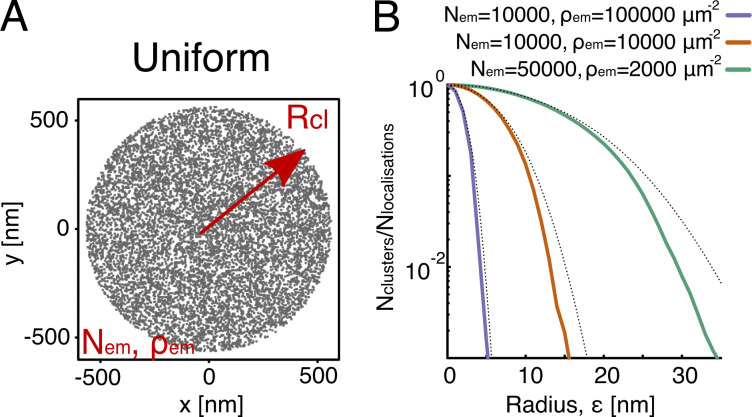Figure S1.
The Poissonian functional form in the intra-cluster regime. (A) To test the Poissonian functional form (Eq. 1) of the intra-cluster regime of SuperStructure curves, we simulated localizations inside clusters as a uniform distribution of points distributed within a circle of radius The resulting average density is The number of points included in any circular subregion of radius is, on average, and is in fact itself Poisson distributed. (B) To check the theoretical prediction of Eq. 1, we have created simulated datasets for various and The theoretical predictions (dotted lines) with are in good agreement with the SuperStructure curves, indicating that indeed Eq. 1 correctly captures the behavior of uniformly distributed points forming one idealized cluster. However, note that for there is already an overcounting of clusters at large values of due to the fact that DBSCAN merges indirectly related emitters in a single big cluster. This suggests not to extend the summation to higher values of From Eq. 1, the end of the intra-cluster regime can be approximated by the width of the Poisson function, i.e., (at 99% confidence level), where is the decay length identified by Eq. 1. This is confirmed by observing that predicted for the curves are and which correspond to (when most of the points have been merged in a single cluster).

